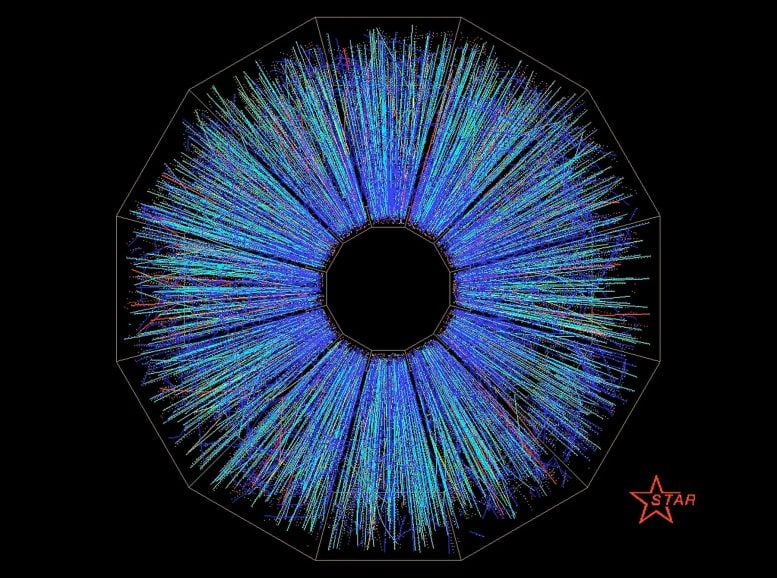
What Are Quarks and Gluons?
Quarks and gluons are the building blocks of protons and neutrons, which in turn are the building blocks of atomic nuclei. Scientists’ current understanding is that quarks and gluons are indivisible—they cannot be broken down into smaller components. They are the only fundamental particles to have something called color-charge.
In addition to having a positive or negative electric-charge (like protons and neutrons), quarks and gluons can have three additional states of charge: positive and negative redness, greenness, and blueness. These so-called color charges are just names—they are not related to actual colors.
The force that connects positive and negative color charges is called the strong nuclear force. This strong nuclear force is the most powerful force involved with holding matter together. It is much stronger than the three other fundamental forces: gravity, electromagnetism, and the weak nuclear forces. Because the strong nuclear force is so powerful, it makes it extremely difficult to separate quarks and gluons. Because of this, quarks and gluons are bound inside composite particles. The only way to separate these particles is to create a state of matter known as quark-gluon plasma.
In this plasma, the density and temperature are so high that protons and neutrons melt. This soup of quarks and gluons permeated the entire universe until a few fractions of a second after the Big Bang, when the universe cooled enough that quarks and gluons froze into protons and neutrons.
Today, scientists study this quark-gluon plasma at special facilities such as the Relativistic Heavy Ion Collider (RHIC) at Brookhaven National Laboratory.
Quark and Gluon Facts
- There are six different kinds of quarks with a wide range of masses. They are named up, down, charm, strange, top, and bottom.
- Quarks are the only elementary particles to experience all the known forces of nature and to have a fractional electric charge.
- The interaction between quarks and gluons is responsible for almost all the perceived mass of protons and neutrons and is therefore where we get our mass.
DOE Office of Science: Contributions to Quarks and Gluons
DOE supports research on the interaction of quarks and gluons, the ways they combine into composite particles called hadrons, and the way they behave at high temperature and density. Scientists study these topics at DOE accelerator facilities like RHIC and the Continuous Electron Beam Accelerator Facility (CEBAF) at the Thomas Jefferson National Accelerator Facility.
The theory that describes the strong nuclear force known as Quantum-Chromodynamics is notoriously difficult to solve. However, it can be simulated on supercomputers built and maintained at DOE facilities. DOE has been a leader in the study of quarks and gluons since the 1960s. The idea of quarks was proposed in 1964, and evidence of their existence was seen in experiments in 1968 at the Stanford Linear Accelerator Center (SLAC). The heaviest and last discovered quark was first observed at Fermilab in 1995.
3 Comments
… Oh please, just educate me on this, I have no knowledge about quarks and gluons, that is such a mystery to me…
I am confused a bit. Gluons are negatively charged? What are electrons made of?
Science Made Simple: What Are Quarks and Gluons?
We don’t know.